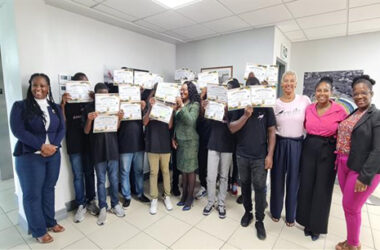A long-term solution is being spearheaded by the Disaster Vulnerability Reduction Project (DVRP) and the Department of Forestry for five of the island’s major rivers, which have been severely damaged by a combination of storms from the early 90s.
Chief Forestry Officer, Alwin Dornelly revealed that the long-term solution is an initiative called The Assessment and Rehabilitation of Major Rivers.
“The assessment of the river is part of a wider initiative the forestry department would have developed several years ago with the initiation of the DVRP Project,” Dornelly says.
The five rivers are the Fond D’or, Troumasse, Marquis, Cul De Sac and Choc rivers which are integral to Saint Lucians.
“These watersheds have been critical to providing water for Saint Lucia’s continuation of fresh water that could be captured or has been captured by the water company, WASCO, for distribution,” The Chief Forestry Officer indicated.
According to the technical coordinator of Component 2 of the DVRP, Christopher Williams, Canadian engineering firm CBCL has been contracted to conduct the functions of assessment and rehabilitation.
“As the title suggests, there are two significant components. One is to assess the current status of the rivers with respect to the level of degradation of the riverbanks, the current conditions of the stream flow, the velocity of the stream flow, water quality vegetation within the riverbank, the land uses with the wider watershed, whether commercial. Residential, agricultural, land uses, the presence of critical infrastructure, such as roads and bridges,” he said.
Such data would be used to inform the design of nature-based restoration intervention measures. This will be the first time these measures are used in Saint Lucia. Senior Civil Engineer of CBCL, David Parsons explained that bioengineering is a form of these types of interventions aimed at restoring the physical integrity of the rivers.
“Bioengineering is essentially using plants, vegetation and natural type of sources materials to help stabilize the banks. Instead of using heavy concrete and rebar and typical engineering resources to provide retaining walls, these are more what we call soft methods to allow the river to grow in their natural means but is producing reinforcements that might take longer to occur in their natural habitat,” Parsons said.
Based on the assessment, CBCL has indicated a variety of recommendations.
“Basically, we have provided examples of detailed designs. A little bit closer to hard engineering, a hybrid geo-technical and a bioengineering design and then we have provided options right down that are easy to employ but a lot simpler and stuff from live stakes, live posts, waddle fences, little bit simpler methods,” Clarifies Parsons.
The process would reduce the need for desilting rivers every year, and ultimately reduce the risk of flooding in all vulnerable communities.





